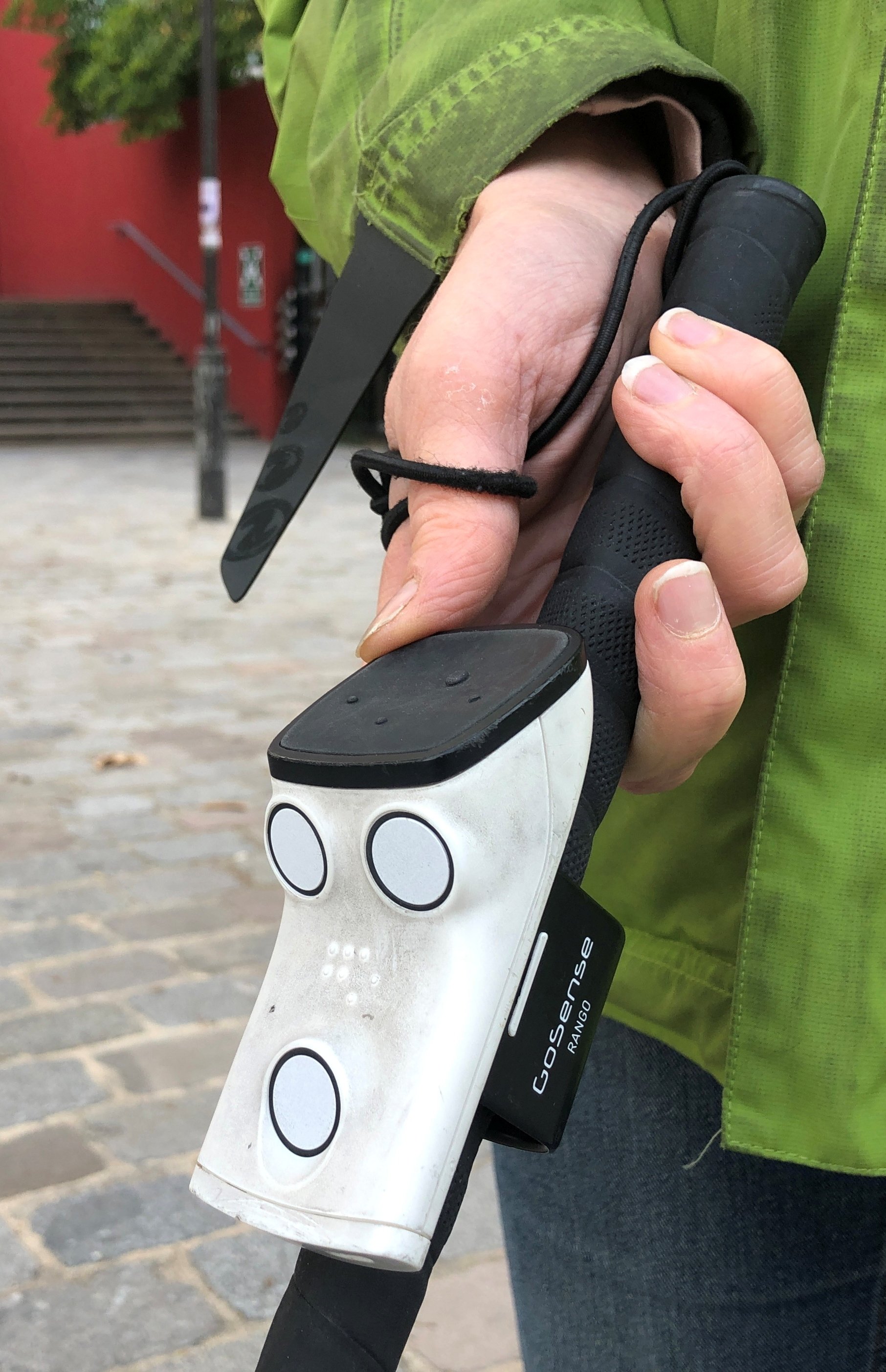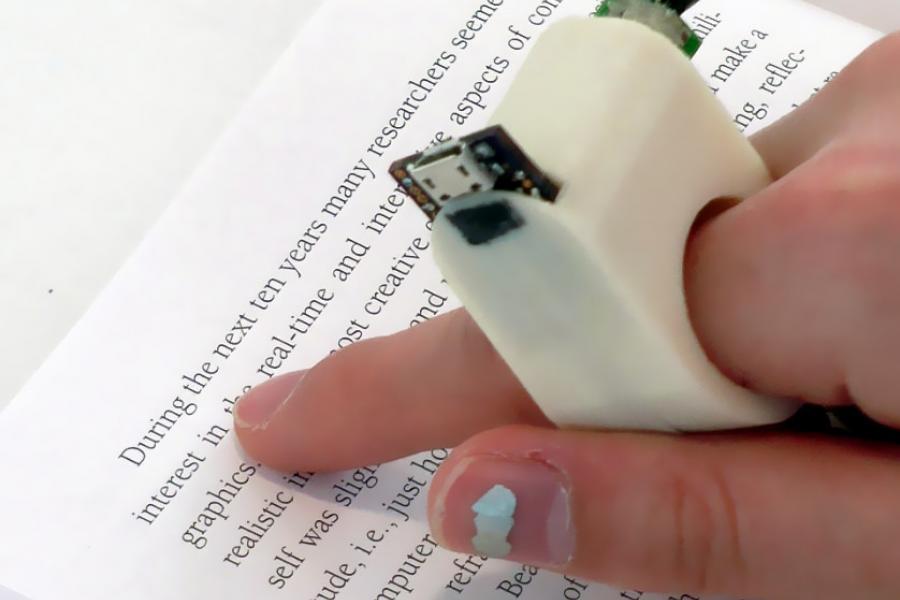Empowering Freedom With Assistive Technology for the Blind
The combination of assistive technology into the lives of individuals with visual disabilities represents a substantial innovation in promoting independence and self-sufficiency. From innovative display viewers to sophisticated smart walking sticks, these tools not only improve daily navigation and communication but likewise encourage individuals to engage meaningfully in various elements of life. As we discover the myriad advantages and real-world applications of these modern technologies, it becomes critical to take a look at the hidden aspects that add to their efficiency and the potential for future growths in this crucial area.
Summary of Assistive Modern Technology

The development of assistive innovation is grounded in concepts of inclusivity and empowerment. Advancements in software program, hardware, and sensory enhancements supply individuals with options tailored to their details demands. From screen readers that convert text to speech, to tactile tools that convey details via touch, these tools transform the means individuals involve with their surroundings.
Along with functional applications, assistive modern technology cultivates higher social inclusion and participation in numerous fields, including education and employment (Voice-activated assistive devices). As r & d proceed to develop, the potential for assistive innovation to better improve the lives of aesthetically damaged individuals remains appealing, leading the way for an extra fair society where everybody can flourish
Types of Assistive Instruments
A selection of assistive devices have actually arised to sustain individuals with visual disabilities, each created to satisfy particular needs and enhance day-to-day performance. These devices vary from low-tech remedies to high-tech innovations, offering varied choices for customers.
Low-tech tools consist of magnifiers and large-print products that help in analysis and writing. Braille devices, such as Braille slates and stylus pens, allow responsive analysis and communication. Positioning and flexibility help, like white walking canes, aid customers browse their setting safely.
On the higher end of the range, digital magnifying systems and screen readers provide substantial support. Electronic magnifiers allow users to expand text and images on screens, while screen visitors convert electronic content right into manufactured speech, helping with accessibility to information on smartphones and computer systems.
Mobile phone applications additionally play an essential function, providing functions like text acknowledgment and navigation assistance. Wearable modern technology, such as clever glasses equipped with increased truth, is emerging as a promising tool to enhance situational recognition.
Benefits of Assistive Modern Technology
The combination of assistive innovation dramatically boosts the high quality of life for individuals with aesthetic problems. These modern technologies encourage customers by promoting self-reliance, enabling them to browse their settings more successfully and do day-to-day jobs with better convenience. For circumstances, screen readers and magnification software enable individuals to access electronic information, fostering educational and expert possibilities that might have formerly run out reach.
Moreover, assistive tools such as smart canes and GPS applications provide real-time navigation assistance, boosting wheelchair and security. This boosted autonomy not just improves self-worth yet also urges social engagement, permitting users to participate even more completely in their neighborhoods.
Assistive innovation additionally promotes communication, aiding users link with others with voice recognition and text-to-speech applications. This ability is vital for preserving partnerships and accessing important info.
In addition, the customization choices available with several assistive technologies make sure that customers can tailor tools to their certain needs, better boosting functionality and efficiency. Generally, the advantages of assistive technology for individuals with aesthetic problems are extensive, advertising a more comprehensive culture where everybody can pursue their goals and desires.
Situation Research Studies and Success Stories
Highlighting the transformative effect of assistive innovation, countless instance studies show how people with aesthetic problems have effectively incorporated these devices right into their lives. One compelling example includes an university pupil who utilized screen reading software program to browse scholastic products and on the internet resources effectively. This technology not just promoted her education and learning but also enhanced her self-confidence in taking part in conversations and team jobs.
One more situation study features a specialist who employs a smartphone application designed for navigation and things acknowledgment. By utilizing this application, he has actually restored freedom in both his personal and job environments, permitting him to commute independently and involve with coworkers extra properly.
In addition, a retiree shared her experience with braille e-readers, which enabled her to access a vast array of literature and stay connected with her neighborhood with book clubs.
These success stories underscore the important function of assistive innovation in promoting self-reliance, improving lifestyle, and advertising social combination for individuals with visual disabilities (OCR devices for the blind). By welcoming these cutting-edge devices, customers can get over challenges and seize chances that add to their expert and individual gratification

Future Trends in Assistive Innovation
Technology in assistive technology is poised to redefine the landscape of assistance for people with aesthetic problems. Arising patterns highlight the assimilation of fabricated knowledge (AI) and equipment discovering, which enhance the capability of tools that assist with navigating and details accessibility. AI-driven applications are now capable of translating aesthetic data in real-time, allowing users to engage with their setting extra independently.
Additionally, the advancement of wearable technology is advancing rapidly. Smart glasses furnished with enhanced fact (AR) can give audio descriptions of surroundings, her comment is here transforming just how customers communicate with public spaces. These devices not only advertise autonomy yet additionally foster social addition.
Additionally, the Web of Points (IoT) is making homes smarter, allowing for seamless connection in between assistive devices and everyday home appliances. This connectivity encourages individuals by making it possible frameless glasses for computerized responses and voice-activated controls customized to private demands.
Final Thought
In verdict, assistive innovation plays a critical role in equipping people with visual disabilities by enhancing their self-reliance and involvement with their surroundings. The diverse variety of applications and devices readily available not just assists in navigation and interaction however likewise promotes social integration and opportunities for professional and personal growth. As developments proceed in this field, the capacity for boosting the quality of life for those with aesthetic impairments will expand, promoting better freedom and empowerment.
